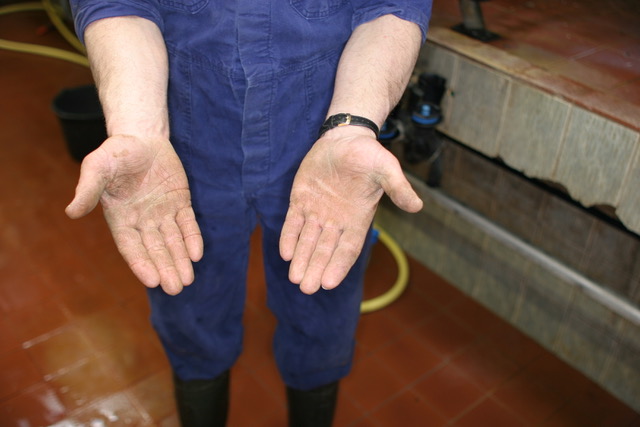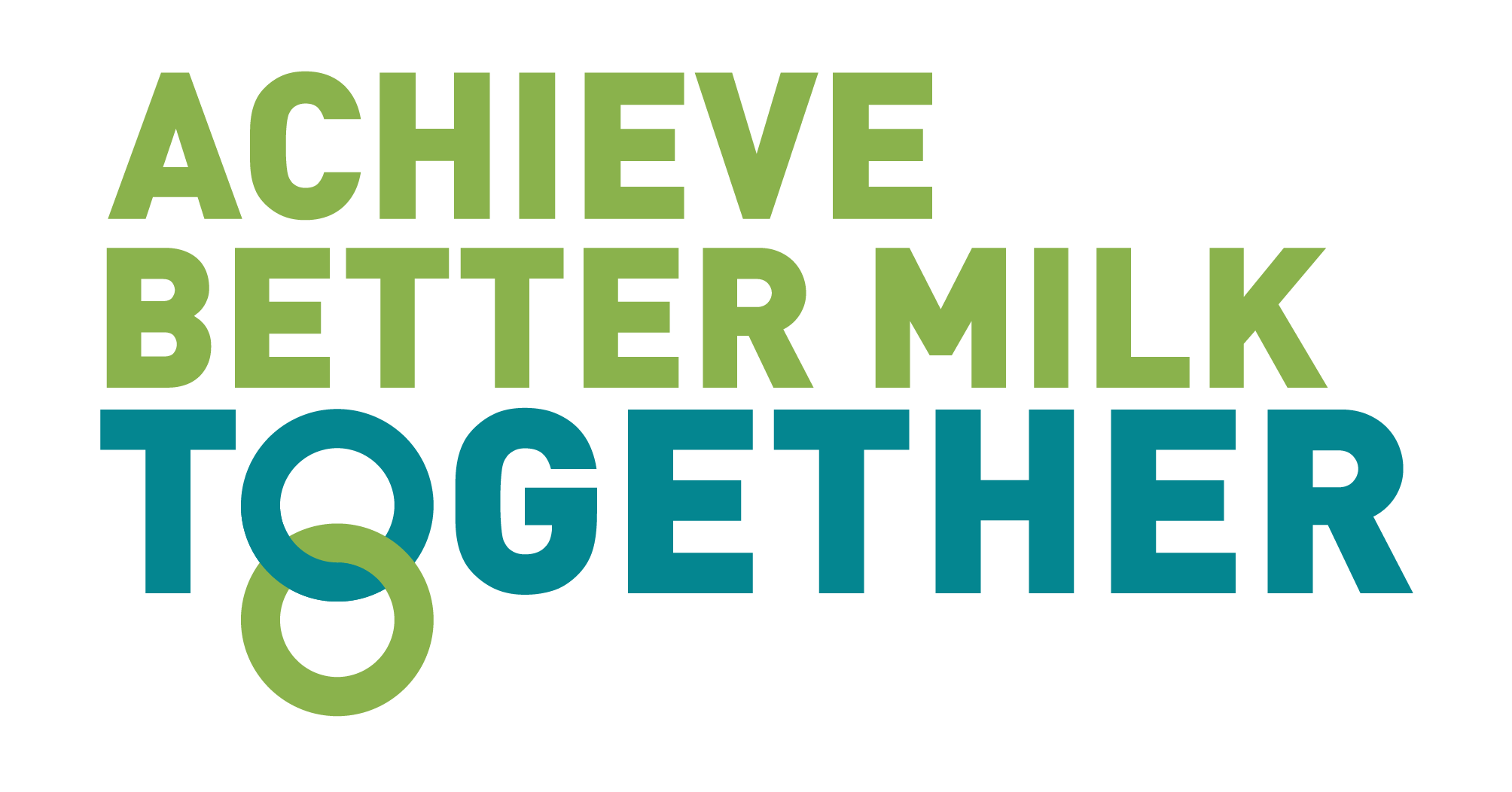The aim of milking is: ‘to collect excellent quality milk as a safe nutritional product for humans, and to keep each cow and her udder healthy and comfortable’.
The three pillars of successful milking are:
– clean and comfortable cows
– excellent milking routines
– milking equipment in first-rate working order
Comfortable cows give more milk
Stress due to agitation and excitement has a negative impact on oxytocin release and on milk let-down. It will reduce milk yield and increase risk of mastitis.
Visits to the milking parlour should be a restful, stress-free and comfortable experience for cows. Cows hear, see and smell the agitation of other cows, and will remember uncomfortable moments from previous visits to the parlour. This includes stalls that are too small for larger cows.
Stressful experiences will make cows reluctant to come into the milk parlour, increasing the number of cows that need to be herded. Herding itself can be a negative experience too.
The waiting area should be well lit and well ventilated. Milkers should gather the cows up calmly.
Cows should also leave the parlour calmly and without hesitation. Obstacles such as slippery floors, steps up and down, tight bends, shiny surfaces or cows blocking the passage will delay cows leaving. If the milkers react by making noise or hitting cows, all cows will be stressed, including those in the parlour and in the waiting area.
What to do if things go wrong in the parlour
Cleanliness starts in the barn
Cleanliness is next to godliness, and that is particularly true for dairy farms. Dirty cows are a sign of dirty surroundings with a high infectious pressure. Dirty, hairy udders cannot be milked in a hygienic manner and are a potential source of infection for other cows.
Moist and dirt on the udder can come from two sources: floors and walkways, and resting places.
Clean and dry floors and walkways will ensure clean udders and will also reduce the risk of claw problems.
Resting places and cubicles should be dry and well bedded. Wet surfaces are not only a source of contamination, they are also a cause of stress for the cow, as she will prefer a clean and dry bedding to lie down. This will cause her to remain standing, increasing the risk for claw problems.
Long udder hair is a source of dirt and dust. Udder hair can be removed, if necessary, either by singeing or by clipping.
- Use the hygiene score card in VetIMPRESS/Multi Data/Cleanliness or from AHDB at https://ahdb.org.uk/knowledge-library/cleanliness-scorecard
Optimal udder hygiene: more than just dipping
Hygienic milking is not only important for food safety of the consumer, it will also prevent the transmission of pathogens between cows.
Good udder hygiene in the parlour starts with the use of milking gloves , clean teats and post-dipping. Pre-dipping is optional.

Hand hygiene is essential in the milking parlour. Mastitis pathogens such as Staphylococci love to colonize milkers’ hands
Milking gloves
Milkers’ hands can transmit traces of milk – potentially containing mastitis pathogens – from one cow to the other. Mastitis pathogens such as Staphylococci love to colonize milkers’ hands!
Wearing gloves will reduce this risk. Gloves are also easier to spray clean. Alternatively, milkers should regularly clean and disinfect hands, in particular after milking a cow with a high cell count.
Clean teats
Very dirty udders and teats should be washed and dried. Drying them well is of particular importance as otherwise the dissolved dirt will trickle down to the teat end – exactly where it shouldn’t be! Wet teats will also cause the teat cups to ride up, putting greater stress on the teat. They can also slip down and aspirate dirt, together with bacteria.
When drying the udder, use disposable paper towels or a single cloth towel per cow to avoid passing bacteria from one cow to another.
Post dipping
After milking, the teat sphincter will remain open for a while. This is why the teats should be disinfected after each milking to kill the bacteria remaining on the skin around the teat opening.
Teat dips should contain a disinfectant such as iodine, chlorhexidine or lactic acid. Without a disinfectant, teat dipping has no purpose and can even transmit udder infections.
Teat dips should also contain a skin softener, keeping teats soft and supple. This is of particular importance in winter, especially with free-stall bedding that dries out the teat skin. A soft, supple teat is better protected against the mechanical action of the milking machine and against mastitis agents.
When dipping, it is important to dunk the teats deep enough – at least half of the teat – for it to be effective. When spraying, all sides of the teat should be reached. As this is not easy, dipping is considered more reliable than spraying.
As the teat can remain open for in excess of an hour after milking, farmers should provide fresh feed after milking to keep the cows standing. Also more importantly, cows should always enter a clean and dry surroundings after milking.
